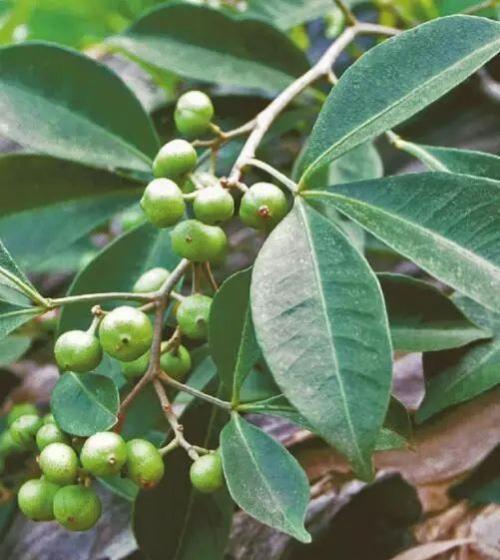Zanthoxylum asiaticum seed

Zanthoxylum asiaticum (Asian Prickly Ash) Overview
Description
Zanthoxylum asiaticum, commonly known as Asian Prickly Ash, is a small deciduous tree or shrub belonging to the Rutaceae family, native to East and Southeast Asia. This plant is characterized by its thorny stems, aromatic leaves, and small, yellowish-green flowers that bloom in the spring. The plant typically grows up to 2-5 meters in height, depending on the environmental conditions. Its leaves are compound, with several small leaflets, and the tree produces small fruits that turn reddish as they mature. These fruits contain seeds that are often used in traditional medicinal practices and culinary dishes.
Zanthoxylum asiaticum is closely related to other members of the Zanthoxylum genus, such as Sichuan peppercorns (Zanthoxylum piperitum), and shares many similar characteristics, including the distinctive numbing sensation caused by its seeds.
Ecological Role and Habitat
This species is typically found in temperate and subtropical regions of East Asia, including china, Japan, and Korea. It thrives in well-drained soils, preferring areas with moderate rainfall and temperate climates. Zanthoxylum asiaticum is commonly found in forest margins, hillsides, and along riverbanks. The plant is well-suited for areas with some shade, although it can tolerate direct sunlight. Its thorny branches and aromatic leaves help to protect it from herbivores, while the plant provides food for various insects, birds, and other wildlife, especially during its fruiting season.
Uses and Benefits
- Culinary Use: The fruit and seeds of Zanthoxylum asiaticum are used in cooking, particularly in East and Southeast Asian cuisines. Much like Sichuan peppercorns, the seeds of Zanthoxylum asiaticum impart a unique numbing sensation to the palate, known as “mala,” which is a hallmark of Sichuan cuisine. These seeds are often used to add a spicy, peppery flavor to sauces, broths, and stir-fries, and are commonly found in spice blends and seasoning powders. The seeds are also used to flavor oil and in pickling mixtures.
- Medicinal Uses: Zanthoxylum asiaticum has a long history of use in traditional medicine. Its fruits, seeds, and bark are believed to have a variety of health benefits. In chinese traditional medicine, it is used to treat ailments such as digestive issues, joint pain, and skin conditions. The plant’s seeds are considered to have anti-inflammatory and analgesic properties and are often included in herbal remedies to relieve pain and improve circulation. The bark and leaves have been used in some cultures for their purported ability to treat fevers and reduce swelling.
- Aromatic and Fragrant: Like other species in the Zanthoxylum genus, Zanthoxylum asiaticum contains aromatic oils that contribute to its distinctive spicy fragrance. These essential oils are sometimes used in traditional medicine, aromatherapy, and even in making perfumes. The plant’s pleasant fragrance also makes it useful as an ornamental shrub or tree in gardens, especially where it can be appreciated for both its visual and aromatic qualities.
- Cultural Significance: In some regions, Zanthoxylum asiaticum is also valued for its cultural importance. The plant is used in rituals and ceremonies, where its thorns symbolize protection, and its numbing properties are associated with warding off negative energy. The seeds are often seen as a symbol of resilience and strength in certain folk traditions.
- Ornamental Use: Due to its attractive foliage and thorny structure, Zanthoxylum asiaticum is sometimes used in landscaping as an ornamental plant. Its ability to grow in partial shade and its unique characteristics, including its spicy aroma and striking fruit, make it an interesting choice for gardens and parks. The tree’s small size and its colorful fruit also make it an appealing option for smaller landscapes.
Conclusion
Zanthoxylum asiaticum, or Asian Prickly Ash, is a versatile plant with multiple uses in culinary, medicinal, and ornamental applications. Its unique flavor and numbing properties make it an important ingredient in traditional Asian cuisine, while its medicinal benefits continue to be valued in folk medicine. Additionally, its aromatic qualities and cultural significance further enhance its value. As an ecological contributor, it plays a role in providing food for wildlife and maintaining the balance of local ecosystems. Whether for culinary, medicinal, or ornamental purposes, Zanthoxylum asiaticum is a valuable and multifunctional plant in its native regions.
